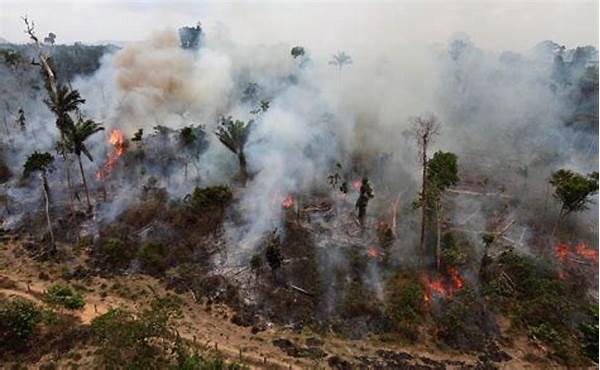The natural environment has long suffered the ramifications of human conflict, with warfare posing a significant threat to ecological stability. Habitat destruction due to warfare is an often overlooked consequence of military actions that can lead to widespread environmental degradation. The disruption of ecosystems as a result of armed conflicts not only poses a risk to biodiversity but also undermines the essential services these habitats provide to humanity.
The Impact of Military Actions on Ecosystems
The environmental impact of warfare manifests in various ways, with habitat destruction due to warfare being one of the most profound. Military operations often involve the use of heavy artillery, aerial bombardments, and landmines, all of which can cause irreversible damage to ecosystems. Forests, wetlands, and grasslands may be decimated, resulting in the loss of flora and fauna that rely on these habitats for survival. Furthermore, the presence of troops can lead to the overexploitation of natural resources, exacerbating the decline of biodiversity.
In addition to direct physical damage, warfare can also result in long-term environmental consequences. The use of chemical agents and pollutants in military operations can contaminate soil and water sources, further contributing to habitat destruction. The recovery of affected ecosystems is often hindered by ongoing conflicts and lack of resources for restoration efforts. Consequently, habitat destruction due to warfare threatens not only the immediate environment but also the long-term health and sustainability of the planet’s ecosystems.
Factors Contributing to Habitat Destruction Due to Warfare
1. Military Infrastructure Development: The construction of bases and facilities often leads to habitat destruction due to warfare as natural landscapes are altered to accommodate military needs.
2. Deforestation for Tactical Advantage: Clearing forests to gain a tactical advantage destroys the habitat, displacing wildlife and disrupting ecological balance.
3. Resources Depletion: Warfare frequently leads to the overconsumption and depletion of natural resources such as water, timber, and minerals, contributing to habitat degradation.
4. Chemical Warfare: The use of chemical agents contaminates ecosystems, resulting in habitat destruction and long-term soil and water pollution.
5. Wildlife Poaching and Trafficking: Conflicts create lawlessness, enabling illicit activities such as poaching, further exacerbating habitat destruction due to warfare.
Long-term Environmental Consequences of Warfare
The long-term consequences of habitat destruction due to warfare are vast and concerning. Once disrupted, ecosystems can take decades, if not centuries, to recover, leaving a lasting impact on biodiversity. The destruction of habitats leads to the loss of species, many of which might be endemic and unable to survive elsewhere. This loss of biodiversity can lead to weakened ecosystems, less resilient to environmental changes, such as climate change.
Moreover, habitat destruction due to warfare has implications for human populations as well. The degradation of ecosystems translates to diminished ecosystem services, such as clean air, water filtration, and fertile soils, which are crucial for human survival and well-being. As natural resources become scarce, tensions over their control can exacerbate existing conflicts, leading to further habitat destruction. Addressing the environmental impacts of warfare requires concerted global efforts to enforce international environmental laws and promote peace to prevent further ecological devastation.
International Efforts to Mitigate Environmental Damage
International organizations and governments recognize the importance of addressing habitat destruction due to warfare. Initiatives such as the United Nations Environment Programme (UNEP) work to assess environmental damage in conflict zones, providing critical data to guide restoration efforts. Additionally, environmental impact assessments are increasingly being integrated into military planning to minimize ecological harm.
Efforts also focus on post-conflict recovery, where international support is often directed towards rebuilding economies and communities. These recovery programs increasingly include environmental restoration projects to address the ecological damage inflicted during warfare. By incorporating environmental considerations into peacekeeping strategies, there is hope for mitigating the effects of habitat destruction due to warfare and promoting long-term ecological stability.
The Role of Conservation Organizations
Conservation organizations play a crucial role in addressing habitat destruction due to warfare. They work tirelessly to protect endangered species and restore damaged ecosystems in conflict-affected areas. Often operating in challenging environments, these organizations raise awareness about the environmental costs of warfare and advocate for stronger protections against environmental damage.
Through partnerships with governments and local communities, conservation organizations help develop sustainable management strategies for natural resources, fostering resilience against future threats. Their efforts contribute significantly to the broader goal of preserving biodiversity and ensuring ecosystems’ ability to support both wildlife and human life, even in the aftermath of destruction due to warfare.
The Urgency of Addressing Environmental Destruction in Conflict Zones
As the pressures on global ecosystems continue to mount, the urgency of addressing habitat destruction due to warfare becomes ever more apparent. Immediate action is needed to prevent further ecological degradation and to conserve the planet’s remaining biodiversity. Strategic planning must integrate environmental protection into conflict resolution and post-conflict reconstruction efforts, ensuring that ecosystem restoration is prioritized alongside human development.
Investing in sustainable practices and environmental education in conflict-affected regions can empower local communities to participate actively in conservation efforts. By doing so, it becomes possible to reduce the environmental toll of warfare, safeguard natural habitats, and build a foundation for peace and ecological resilience—a critical step toward a more stable and sustainable future.
Summary
In conclusion, habitat destruction due to warfare represents a critical challenge that demands urgent attention from the global community. Warfare’s impact on natural environments is multifaceted, involving direct physical destruction, resource depletion, and chemical contamination, all contributing to severe ecological consequences. These impacts not only threaten biodiversity but also endanger essential ecosystem services that support human life.
International cooperation and concerted efforts are essential to address the environmental damages caused by conflicts. Through initiatives like environmental impact assessments, post-conflict recovery programs, and the involvement of conservation organizations, progress can be made towards mitigating and reversing the effects of habitat destruction due to warfare. Ultimately, integrating environmental considerations into peacekeeping and development planning will ensure that ecosystems can not only recover but thrive, contributing to a more harmonious coexistence between humanity and nature.





